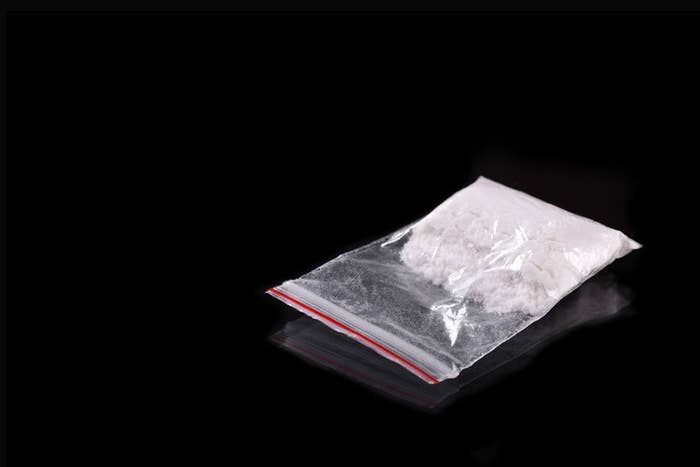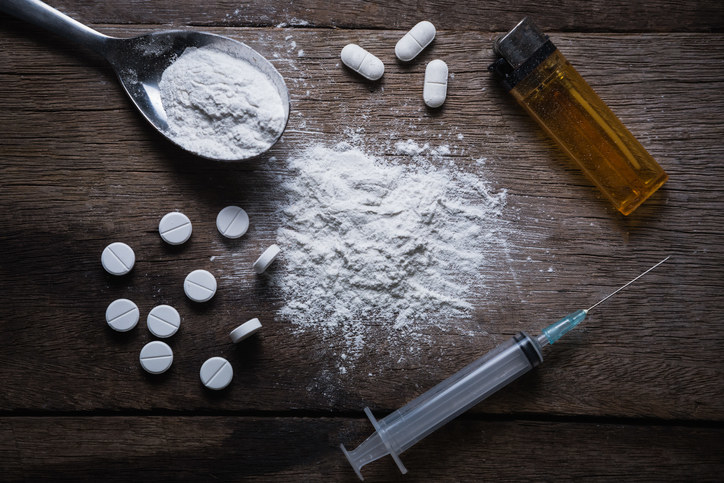A synthetic stimulant known as "monkey dust" has dominated headlines this week with claims that its use has triggered a nationwide warning due to its disturbing side effects of psychosis and strong hallucinations.
Monkey dust is classified as a new psychoactive substance (NPS), which are drugs designed to replicate the effects of illicit drugs such as cocaine, cannabis, and ecstasy.
One news report stated that an "epidemic" of monkey dust use in the UK has been linked to dozens of deaths.
The same report also claimed that in one Australian case, "a woman who took the drug ended up licking the dance floor so feverishly her tongue bled".
Another article cited the drug's powerful hallucinogenic effects, saying that "users have been filmed running into traffic, mutilating themselves, teetering on rooftops and jumping from buildings".
So, what exactly is monkey dust?
Monkey dust, also known by the street name "bath salts", is a designer drug and its primary ingredient is methylenedioxypyrovalerone (MDPV).
MDPV is structurally similar to cathinone, an active alkaloid in the leaves of the khat plant, which are traditionally chewed for their stimulant effect in East African cultures.
MDPV belongs to the cathinone family of drugs, which are thought of chemically as "cousins" of amphetamines such as MDMA (the primary ingredient in ecstasy) and amphetamine (speed).
The drug first came to international attention in 2012 when a "cannibal attack" on a man in Miami was attributed to the attacker being intoxicated by bath salts (although there was no evidence of the drug in his system).
When consumed, the drug binds to norepinephrine and dopamine transporters in the brain, inducing a high that is reported as similar to cocaine, methamphetamine (ice), and MDMA.
In drug discrimination tests using rats, MDPV (monkey dust) substituted fully for methamphetamine, suggesting that the experience of taking these two drugs is extremely similar.

Synthetic drugs such as MDPV first appeared in Australia in the mid-2000s; mephedrone (otherwise known as "meow meow"), alpha-PVP ("flakka"), and methylone belong to the same family of synthetic cathinones as monkey dust and were marketed as designer substitutes for cocaine.
Australia witnessed a small increase in the proportion of people aged 14 or over who had tried one of these synthetic drugs at least once in their lifetime from 0.4% in 2013 to 1% in 2016. However, the proportion of Australians who tried it in 2016 alone had leveled out to 0.3%.
Monkey dust can be snorted, smoked, ingested orally, or injected and it is used in extremely small quantities, with users reporting 5mg or less per session. (MDMA is generally consumed in quantities of between 75mg and 125mg.)
Its users are at risk of intense, prolonged panic attacks, development of psychotic symptoms from sleep deprivation, addictive cravings, and death from overdose.
Professor Michael Cole, a forensic scientist from Anglia Ruskin University, noted in an article for the Conversation that drugs such as monkey dust increase in use where there are lulls in the supply or too much demand for the drugs they are trying to replicate.
Does Australia have an "epidemic" of monkey dust use?
It is highly unlikely that Australia is experiencing epidemic-level use of MDPV.
Dr Nicole Lee, an associate professor at the National Drug Research Institute, told BuzzFeed News that there "isn't much evidence that there's a huge epidemic or that lots and lots of people are using it".
Lee said that she has never seen a patient who has developed a dependence on monkey dust in her clinical work.
Lee notes that the most common medical problems with monkey dust are acute and experienced when drug users believe they are taking another substance such as ecstasy, as monkey dust is sometimes mixed into ecstasy pills.
This week's reports of monkey dust use appear to have stemmed from UK reports of the drug in late 2018. Staffordshire police began to report long-term addictions and violent behaviour from users.
One incident involved a Staffordshire man climbing a roof and throwing roof tiles at police allegedly while high on the drug.
Staffordshire police reported in August that they were receiving an average of 10 calls or more a day related to monkey dust.
However, Sarah Page, a senior lecturer in criminology from Staffordshire University, notes that it is unclear whether these calls were for the same individuals or if monkey dust was being mixed with other substances that exacerbated the situation.

Its appearance in Australia so far appears to be limited, with 4.5kg of MDPV seized upon import from China in 2018; for context over 10 tonnes of other illicit drugs were seized in the same time frame.
Lee said that it is unlikely that drug users would choose to use monkey dust in large numbers if they were aware of its dangerous effects, noting that if there is a "drug around that isn't pleasant or is quite risky then people are less likely to take it unless there's nothing else available," she said.
Despite the limited evidence of its presence in Australia, the Australian Federal Police state that new psychoactive substances are dangerous.
An AFP spokesperson made the plea to "anyone who is considering experimenting with illicit drugs or new psychoactive substances, no matter how they are branded or presented" to avoid taking them and that it is "a gamble with your life that's just not worth taking".
The spokesperson said that drugs marketed as "legal highs" or designer alternatives to illicit drugs "are not harmless; they are not safe; they have deadly consequences".
